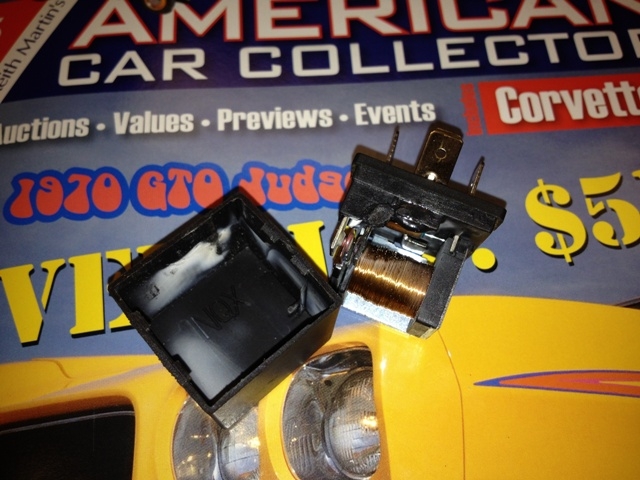
The great thing about American cars is that they pretty much always work. Even if you let one sit for a few months, you can expect it to fire up and run without needing much of anything. But that wasn’t the experience I had this past weekend.
At ACC, we attend a lot of large-scale events, so small ones are always a fun change of pace. On Saturday, I was planning on going to a small car show at the Lake Bible Church in Lake Oswego, Oregon, which is near my house. My plan was to take ACC’s newly stickered Dodge 440 and hand out some magazines, kick tires, and talk cars with the 100-or-so other entrants that usually show up. But the Dodge had other ideas.
We installed a thermostatic switch for the Hemi’s cooling fans about a month ago. I drove it a few times with that setup, and it worked great – fans came on at about 170 degrees and shut off at about 160 degrees. But on Saturday morning, I only made it about two miles from ACC’s HQ before temps crested 200 degrees in the aluminum Hemi. Not a good start to the day.
I pulled over and started poking around under the hood, only to find a very hot and non-functional cooling fan relay. Everything else looked fine, but that brand new $2 relay was toast. And I didn’t have a spare.
After letting the engine cool for a few minutes, I limped the Dodge back to ACC’s garage. I didn’t have time to hunt down another relay, so plan B was to take my trusty ’66 Caprice street/strip car to the event.
I got back in my Charger SRT8, drove back to my house, opened up my garage, hooked up the battery in the Caprice, and hit the key. And although it cranked just fine, for one of the first times since I’d built it, the 468 big-block wouldn’t fire.
So for the second time that morning, I got out and started poking around under the hood. The carburetor was empty even though the gas tank was full. The filter was clean and empty as well, and I’d just rebuilt the mechanical fuel pump a few months prior. All I’d done to the car since the last time I drove it was jack up the rear to look at my worn out rear suspension bushings.
There was clearly an issue here, but now I was really out of time, so I ended up just taking my SRT8 to the show.
What was the deal with my Caprice? On Sunday, I disconnected the fuel line, checked for damage, and blew air through it. I replaced the fuel pump with a spare that works, took apart the carburetor and checked the needle and seat, checked my fuel filter again, and verified spark (even though I knew there was no fuel). And after all that, I found the problem, and it was something I never would have thought of – my fuel tank vent.
The car had been sitting for about two months, so the fuel in the line had all drained back into the tank. A spider or something had blocked the tank’s vent, so fuel wouldn’t move through the line with the non-vented gas cap fitted. With the gas cap off, the car fired right up and ran fine.
Classic cars tend to be pretty simple, but they can ruin your day in unexpected and weird ways. That Dodge relay wasn’t some kind of exotic failure, but the Caprice issue really had me stumped – and for me, two broken classic American cars in one day was a record.
What’s the silliest thing that’s stopped you from using your car? Share it in the comments below.